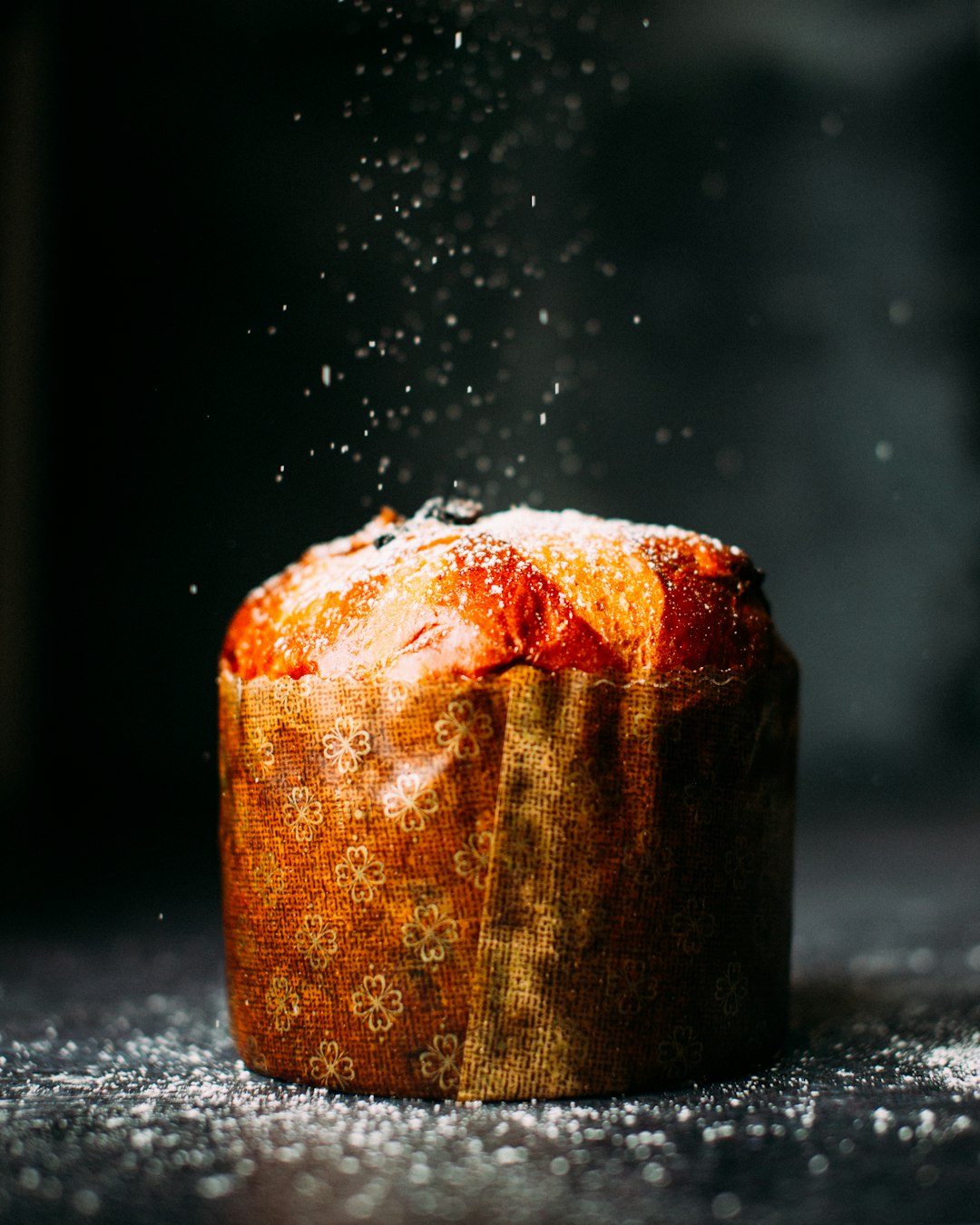Panettone
Panettone boasts a delectable exterior, with golden-hued buttery crusts that cradle its sugary spongy innards. Baked-in dried fruits such as raisins, candied citrus and currants lend a subtle sweetness and richness to the overall mouthfeel. And, when cut into – what can only be described as – aesthetical slices, its bread-like structure is revealed; a soft, fluffy mass that simply melts in the mouth.
For those who like their desserts a little more decadent, chocolate or nut-filled varieties of panettone exist, adding an extra kick to the traditional recipe. However, these alternatives are often more texturally dense, due to the additional ingredients. Regardless, there is something special about devouring a slice of pure, unaltered Panettone.
It's no wonder then why Panettone is served on many holiday tables during the festive season, often being gifted among family and friends. For some, the sight of this delicious dessert is reminiscent of old family traditions, while others relish in sampling new variations of the dish. Either way, this unique cake remains a universal favourite throughout the world, with each country offering its own take on the classic treat.
If you've ever wanted to try making Panettone at home, don't be daunted by the seemingly longlist of recipes available online. In truth, many of the ingredients are easy to find and require simple steps in the baking process. All it takes is a few tried-and-tested methods and a bit of patience, and you should soon have a freshly-baked masterpiece ready for all to enjoy.
Panettone recipes
Amazing Panettone recipes sourced from the web.
The origin of Panettone
Ah, Panettone. The classic Italian Christmas cake that's sure to bring festive cheer to the holiday season. It's a true delight to behold, but what many people don't realize is that this delicious dessert has a fascinating and surprisingly tumultuous history.
The origins of the panettone has been hotly debated for centuries. Tales of its genesis range from the inventive ingenuity of an impoverished Italian baker, to a singular gesture of love by a feudal Italian prince. But what exactly is the truth?
It seems to be the unanimous consensus that the modern day panettone was indeed created in the beautiful city of Milan during the 15th century. During this time period, a baker named Antonio Dattilo created a unique focaccia-like cake made from butter, eggs, dried fruits, and refined wheat flour, earning it the title of "il pan de Tone" (or 'bread of Tone').
The story takes a bit of a darker turn, however, as Dattilo had apparently stolen the recipe from a kitchen of Lord Toni, a powerful local figure. Furious, Lord Toni sought revenge by having Dattilo harshly punished. Fortunately, the benevolent Duke of Milan at the time intervened and instead pardoned Dattilo, allowing him to keep his recipe.
The panettone began to spread slowly but surely, capturing the hearts and palates of the public. Today, it remains one of Italy's most beloved desserts, and continues to enthrall people around the world with its unparalleled taste and texture.
So, next time you dig into a slice of Panettone, take a moment to consider the long, winding history behind this scrumptious treat!
Types of Panettone
Ah, the intoxicating aroma of fresh-baked Panettone. The warmth of the oven, the tantalizing texture, and the heavenly taste of this wonderful Italian treat have made it a revered delicacy among pastry aficionados and weekend bakers alike. But while most of us are familiar with the basic version of Panettone, not many are aware of its myriad varieties, each offering its own unique flavor and texture experience. Below we explore the various styles that make up this delectable Italian classic.
The Original Panettone
The traditional and most popular variety of Panettone is characterized by its soft and spongy texture, and its classic ingredients: wheat flour, eggs, butter, candied fruit, and natural yeast. Oftentimes, raisins are added as well, lending an extra bit of sweetness to the mix. This version is typically served warm, spread with a layer of butter or served plain.
Chocolate Panettone
A delightful twist on the original classic, chocolate Panettone features the same light, fluffy texture, but with a generous portion of melted chocolate chips added to the mix. Not only does this add flavor, but visual appeal as well, making this version a favorite for special occasions and events.
Cinnamon Panettone
Another popular variation is cinnamon Panettone. Instead of the usual candied fruits, this type of Panettone utilizes cinnamon as the primary flavor. The result is a sweet and spicy combination that adds a unique and tantalizing flavor to the pastry, making it a great accompaniment to coffee or tea.
Nutella Panettone
Nutella, the beloved hazelnut spread, has worked its way into the Panettone mix as well. Bakers incorporate it into the recipe in either its pure form, or as a chocolate-hazelnut mixture. The end result is a deliciously creamy and nutty version of the classic treat that is sure to please the palates of Nutella fanatics everywhere.
Cheese Panettone
Most savory in flavor, cheese Panettone swaps out its usual sweetness for a savory variant instead. Here, bakers replace the candied fruits with cheese and give their creations an overall tangy flavor. It may take a few brave souls to venture into this unique direction, but those who do will be pleasantly surprised.
Fruit And Cream Panettone
Last, but certainly not least, is the Fruit and Cream Panettone. Here the classic ingredients are combined with a rich, creamy filling and topped with seasonal fruits. The cream and fruit lend a luscious sweetness to the pastry, elevating it from a tasty snack to an exquisite dessert.
No matter which variety you choose, one thing is for certain: Panettone is an absolute delight. Each flavor evokes its own unique experience, offering something for everyone. So why not treat yourself to one of these delicious Italian pastries and tantalize your taste buds? You won't regret it!



